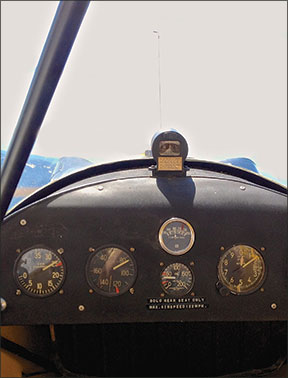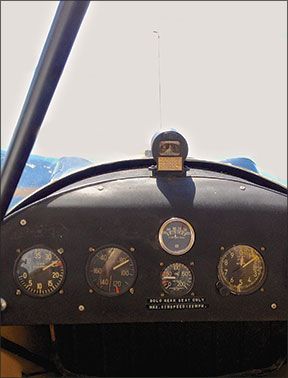Having learned to fly in a J3 Cub, I enjoyed March’s article on no-radio flying, “No Electrics? No Problem!” I did not know then how blessed I was. I also had an excellent pre-solo learning experience.

288
On one flight’s first takeoff, the instructor and I discovered the airspeed indicator was inoperative (plugged pitot tube). I elected to continue the touch-and-go lesson with no problem. It was a familiar airport with familiar landmarks. I flew the approach and landing with routine power settings on base and final and a familiar pitch picture (there was no artificial horizon). It was a great lesson that I did not need an airspeed indicator to fly safely.
Richard Bach wrote a short story many years ago entitled, “Across the country on an oil pressure gage.” He was flying an antique biplane, if memory serves. The message: We don’t really need much instrumentation to fly.
Mike Hart ended his article suggesting that “the right preparation, the right aircraft and a realistic approach to operations without an electrical system” leads to rewarding flying. I would like to suggest that any aircraft can be the right aircraft. How? Turn off the master switch, even if you are flying glass. Ignore most instruments. (Okay, glance at them once in a while for confirmation.)
I learned as a pre-solo student to judge whether the wings were level by looking at the amount of sky between wing and ground—if it was equal under both wings, I was wings-level. Attitude? Use the real horizon out the windscreen, not the artificial one. Coordinated turns? Watch how the nose moves.
So, fellow pilots, I challenge you: Make the proper planning and select the right airspace, then turn off the master switch, ignore the instruments and fly the airplane.
Russell Smith
El Paso, Texas
The Richard Bach short story referenced appears in his book, A Gift of Wings.
Which App?
I have a question about the article, “Flying with Gadgets,” in the February 2013 issue: On the cover, an artificial horizon is displayed on an iPhone. Which product is it?
Kevin Fong
Via e-mail
That article’s author, Mike Hart, responds: “The app on the iPhone is called Artificial Horizon, by iAware, a publisher of other aviation instrument apps. Its settings menu allows it to use the iPhone accelerometer or the built-in gyro (iPhone 4 or better). The iPhone’s built-in gyro has a substantial amount of drift, so I tend to use the accelerometer mode. Like many iPhone apps, you will be facing the steep investment of $0.99, so shop wisely!”
History repeats?
The December 1, 2012, Thorpe T-18 accident mentioned on page 26 of the February 2013 edition is eerily similar to one in Australia some years ago.
A young airline pilot was flying home and did not arrive. His father contacted a friend at the departure airport who immediately flew the same route. After approximately 20 minutes on the same track, he spotted the wreckage.
The ATSB did not investigate this accident, so a police officer asked me if I could have a look after the wreckage was relocated. The primary cause was immediately obvious: The exhaust pipe had been shortened by persons unknown, and was rubbing on the firewall belly junction, right between the rudder pedals. It burned through the skin. It would seem the pilot was overcome by carbon monoxide. The aircraft departed level flight, entered a dive and broke up.
Maybe that was the cause of the one you reported? It’s interesting that both accidents happened about 20 minutes into the cruise portion and both broke up in the air.
Arnold Long
Brisbane, Australia
Thanks for the insights. As this issue was being finalized, the NTSB had not yet determined the December 1 accident’s probable cause.




